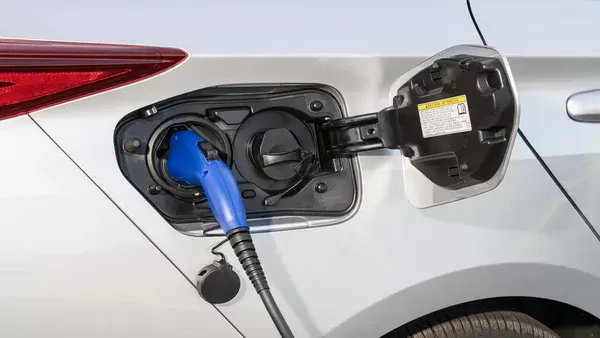Notifications

8 minutes, 6 seconds
-21 Views 0 Comments 0 Likes 0 Reviews

Introduction: The Critical Role of CPMS in the EV Revolution
As a leading EV charger manufacturer in China, LiCB Charge offers reliable AC and DC electric vehicle charging stations along with comprehensive charging solutions.
The transition to electric vehicles (EVs) is a central aspect of the global effort to combat climate change and reduce dependence on fossil fuels. With governments setting ambitious net-zero goals and automakers phasing out internal combustion engines, the demand for a robust, scalable, and intelligent EV charging infrastructure is at an all-time high. At the heart of this infrastructure lies the Charge Point Management System (CPMS), a software platform that ensures the smooth operation, optimization, and monetization of EV charging networks.
A CPMS is not just a monitoring tool—it's a comprehensive system that enables charge point operators (CPOs), e-mobility service providers (eMSPs), and businesses to effectively manage charging stations, ensuring both operational efficiency and a seamless experience for drivers. This system encompasses everything from real-time remote control and dynamic energy management to user authentication and billing.
In this guide, we will explore:
The core architecture and functionalities of a CPMS
Why CPMS solutions are essential for modern EV networks
Key challenges that CPMS address in EV charging operations
The latest technological innovations in charge point management
Future trends in CPMS evolution
By the end of this guide, readers will understand how CPMS platforms are revolutionizing the EV charging landscape, facilitating the growth of electric mobility, and contributing to the transition to cleaner, greener transportation.
Section 1: Understanding Charge Point Management Systems (CPMS)
1.1 Definition & Core Purpose
A Charge Point Management System (CPMS) is a centralized software platform that enables operators to monitor, control, and optimize EV charging stations within a network. It serves as the operational brain of the network, ensuring real-time management, automated workflows, and advanced analytics. Unlike standalone chargers, a CPMS allows multiple stations to communicate, share data, and adapt operations based on factors like demand, energy availability, and user requirements.
1.2 Key Components of a CPMS
A modern CPMS typically includes several key modules:
Central Management Dashboard:
Provides an overview of the status and usage of connected chargers, allowing for remote session starts, stops, and firmware updates.
User Authentication & Access Control:
Supports various authentication methods, including RFID cards, mobile apps (QR code scanning), and ISO 15118 for seamless plug-and-charge experiences.
Billing & Payment Processing:
Allows flexible pricing models (e.g., per kWh, per minute) and integrates with popular payment gateways like Stripe, PayPal, and Adyen, enabling automated invoicing and fleet management.
Energy Management & Load Balancing:
Dynamically distributes power to prevent grid overload, optimizes charging costs, and integrates renewable energy sources such as solar or wind power.
Reporting & Business Intelligence:
Provides usage analytics, energy consumption reports, and predictive maintenance alerts, helping operators optimize operations and sustainability efforts.
Section 2: Why Every EV Charging Network Needs a CPMS
2.1 The Scalability Challenge
With the rise of EV adoption, charging networks must scale rapidly. A CPMS helps operators manage thousands of charging stations, enabling seamless expansion and standardization across various hardware platforms.
2.2 Ensuring Grid Stability & Energy Efficiency
Unmanaged charging can cause grid instability. A CPMS ensures energy efficiency through:
Load balancing to optimize power distribution
Demand-response integration for off-peak charging
Renewable energy optimization to minimize reliance on the grid
2.3 Enhancing User Experience & Trust
A reliable charging experience is key to fostering EV adoption. A CPMS enhances the user experience by:
Providing real-time status updates via mobile apps and navigation systems
Offering fault detection with automatic alerts
Enabling seamless roaming between different networks through interoperability protocols like OCPI
2.4 Enabling New Business Models
A CPMS opens up new revenue opportunities for businesses, including:
Subscription-based charging services
Premium charging spots and reserved parking
Advertising and partnerships with retail businesses
Section 3: Cutting-Edge Innovations in CPMS Technology
3.1 AI & Machine Learning for Predictive Maintenance
AI-driven anomaly detection identifies failing components before they break, reducing the need for technician visits and ensuring uptime.
3.2 Vehicle-to-Grid (V2G) & Bidirectional Charging
With V2G technology, EVs can act as mobile energy storage, feeding electricity back to the grid when needed. CPMS platforms can manage energy trading and revenue sharing from this bi-directional process.
3.3 Blockchain for Secure, Transparent Transactions
Blockchain technology offers decentralized billing, preventing fraud, and enabling automated payments through smart contracts, ensuring transparency and security.
3.4 Autonomous Fleet Management
For robotaxi and electric delivery fleets, CPMS solutions enable dynamic scheduling and prioritization based on vehicle battery levels, ensuring operational efficiency.
Section 4: The Future of CPMS – What’s Next?
4.1 Ultra-Fast Charging & Megawatt-Level Systems
The advent of 350kW+ chargers requires advanced CPMS to manage their power without destabilizing the grid. Battery buffering solutions are being developed to reduce demand charges and optimize energy flow.
4.2 Global Interoperability & Plug-and-Charge Dominance
Global EV networks are aiming for seamless cross-network roaming. The adoption of ISO 15118 will enable automated authentication, making the charging process as simple as "plug-and-charge."
4.3 Integration with Smart Cities & IoT Ecosystems
CPMS systems will increasingly integrate with smart city infrastructure, enabling traffic-adaptive pricing, syncing with public transportation schedules, and aligning with grid energy systems.
Conclusion: CPMS as the Foundation of the EV Ecosystem
Charge Point Management Systems are the backbone of modern EV infrastructure. As the demand for EV charging networks grows, CPMS platforms ensure that charging stations are managed efficiently, reliably, and at scale. Through innovations in predictive maintenance, V2G, blockchain, and autonomous fleet management, CPMS is poised to drive the future of electric mobility.
As we move toward a more sustainable transportation ecosystem, the role of CPMS will become even more critical in managing the complexity and scale of global EV charging networks. These systems will enable not only the continued growth of electric mobility but also the integration of clean energy solutions, creating a greener and more efficient transportation future.Know more about Google SEO Directory
China EV Chargers EV Charger Manufacturer Smart EV Chargers Electric Car Chargers Electric Vehicle Chargers Electric Car Charging Stations

